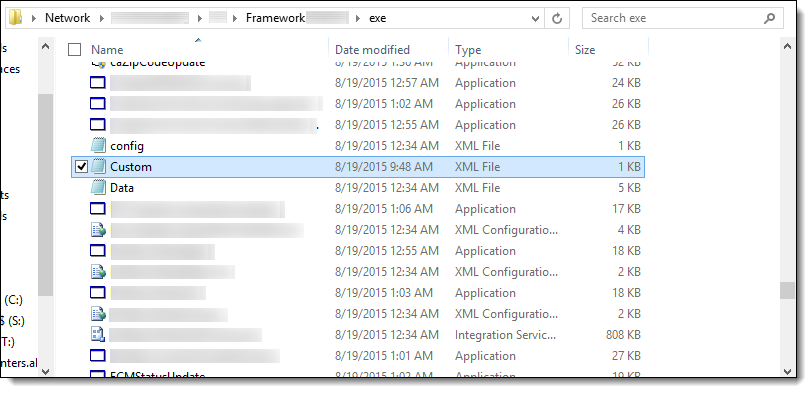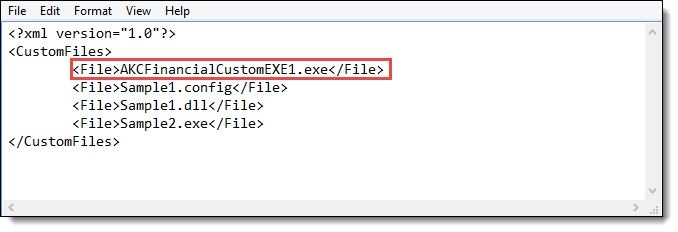The following table outlines important notes that need to be considered during an upgrade to version 15.01:
| Core | Area of Framework | Note | ||||||
| All | Add a Fee and Add a Fee (Home Equity) Rule Templates |
In 15.01.36, two new action templates for Add a Fee and Add a Fee (Home Equity) were added to InRule to support the Military Lending Act; therefore, the existing Add a Fee and Add a Fee (Home Equity) action templates were renamed as follows:
The action templates listed above are being phased out as of the 15.01.36 release. Any rules authored with these templates will break when they are removed in a future release, therefore, it is recommended that the new Add a Fee and Add a Fee (Home Equity) action templates are used to author Fee rules and replace existing rule logic that uses the OBSOLETE templates. |
||||||
| All | Decision ID field |
The Decisioning Process has been enhanced to calculate two decisions for a loan application, one for the loan and one for the overall application. To support this enhancement, a new LoanDecisionId field has been added to the Field List and is now available to be added to an Application screen in order to display the decision rendered for a loan. After the upgrade to 15.01, the new LoanDecisionId field is automatically set to the same value as the current DecisionId field. |
||||||
| All | Reports - Custom |
After an upgrade to version 15.01, custom reports should NOT be resaved in the Framework. If custom reports are resaved, their custom formatting is lost and the report must be recreated.
|
||||||
| All | Rules Management | A new version of InRule, 4.6.33.576, is included in version 15.01.44 of the Framework. In order for Rules Management to work correctly following the upgrade to 15.01.44, a system administrator must Sync Lookups and Sync Custom Fields within System Management > Origination > Rules Management. | ||||||
| All | "This Application" Rule Template |
A new rule template named “Current Application” has been added to the Application Entity of Rules Management to resolve the _parentContext errors experienced by institutions when using the “This Application” template.
|
||||||
| All | Validation Models | In 15.01, validation models are assigned to sub-products independent of workflow models. To support this, a new Validation Models page has been added to System Management, and, as part of an upgrade to version 15.01, validation models are created for any workflow models with assigned validations. This new validation model includes the same name and configuration as appeared in the workflow model and is automatically assigned to the same sub-product as the previously configured workflow model. | ||||||
| All | Upgrading from version 10 or 15.00.06 to 15.01.XX - External File Installations |
The following external files must be re-installed when completing an upgrade from version 10 or 15.00.06 to 15.01.XX:
|
||||||
| DataSafe | Host and User Passwords | After an upgrade to version 15.01, a DataSafe - Origination credential is automatically created for each user that has a value for Host ID 2 and Host Password prior to the upgrade. The new credential is created with the existing Host ID 2 and Host Password values configured for the user within the User Information tab in System Management > Users and is added to the Credentials tab of the Edit User window. | ||||||
| Symitar | Upgrading from version 10 to 15.01.XX - External File Installations |
The following external files must be re-installed when completing an upgrade from version 10 to 15.01.XX:
|
||||||
| Symitar | Upgrading from version 15.00.06 to 15.01.XX - External File Installations |
The following external files must be re-installed when completing an upgrade from version 15.00.06 to 15.01.XX:
|
Framework Installer Support of Custom Executables and Files
The Framework version 15.01 installer retains any custom executables and files installed at the financial institution through the creation of a Custom.xml file. Created by Akcelerant or the financial institution prior to running the 15.01 installer, the Custom.xml file lists all file names of the custom executables and files installed at the financial institution. Any custom executables and files listed within the Custom.xml file are not deleted from the Framework's Exe directory during the installation process. The Custom.xml file is also not deleted during the installation process.
 |
Akcelerant creates the Custom.xml file if they have created custom executables or files on behalf of the financial institution. The financial institution creates the Custom.xml file if they have created their own custom executables or files. |
The following are the instructions for creating the Custom.xml file:
- Copy the below text and paste into Notepad:
<?xml version="1.0"?>
<CustomFiles>
<File>Sample1.exe</File>
<File>Sample1.config</File>
<File>Sample1.dll</File>
<File>Sample2.exe</File>
</CustomFiles>
- Save the Notepad file with the name Custom.xml.
- Copy the Custom.xml file into the exe folder on the Framework server.
The exe folder is typically located on the Framework's web/app server.
- Open the Custom.xml file and replace a line of text between <File> </File> with the name of a custom executable or file in the exe folder, as shown below.
- Repeat for as many custom executables and files that exist in the exe folder, listing each one in a separate row surrounded by <File> </File>.
- When all custom files have been listed, save the Custom.xml file.
- Proceed with the 15.01 installation process by following the Installation Guide found in the web version of the Framework User Manual.


